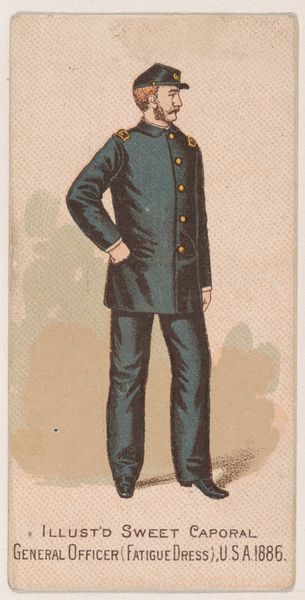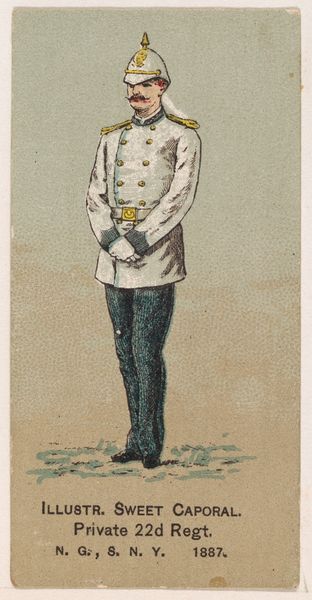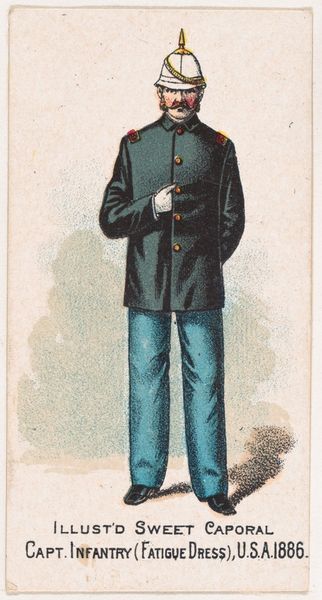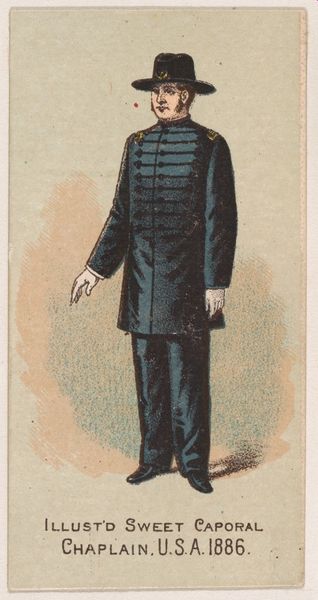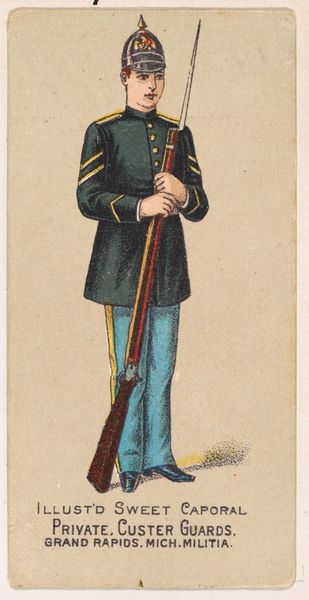
Paul Aloysius Hines, Center Field, Washington Nationals, from the Old Judge series (N172) for Old Judge Cigarettes 1887
0:00
0:00
drawing, print, photography
#
portrait
#
drawing
#
still-life-photography
# print
#
impressionism
#
baseball
#
photography
#
historical photography
#
portrait reference
Dimensions: sheet: 2 11/16 x 1 3/8 in. (6.9 x 3.5 cm)
Copyright: Public Domain
Curator: The sepia tones evoke a sense of faded glory in this 1887 Goodwin & Company photographic print. It's titled "Paul Aloysius Hines, Center Field, Washington Nationals, from the Old Judge series (N172) for Old Judge Cigarettes," currently residing at The Met. Editor: My first impression is melancholy, like a Victorian-era daguerreotype. The baseball player's solemn expression and the subdued color palette create a strong sense of nostalgia and lost time. It almost romanticizes the past in a way. Curator: Structurally, the composition is fairly straightforward; a full-length portrait, typical for this type of trading card. The subject is centrally positioned. Note the careful staging to emphasize the geometric pattern in his uniform. See how the lines of his cap, shirt, and belt create defined horizontals in the composition. Editor: Beyond the lines, consider what this card represents. This wasn't just about baseball, it was a commercial venture linked to the tobacco industry. It glamorizes not just the sport, but indirectly endorses cigarette use, especially within the emerging youth culture of the time. It raises questions about the commodification of athletes and the historical normalization of now-controversial marketing practices. Curator: Certainly, but let's not disregard its formal qualities. Observe the subtle variations in the sepia tones which allow a depth to the composition; it gives it an ethereal feel which elevates it beyond pure portraiture. The texture too—look how it almost resembles a lithograph, with that grainy quality. Editor: I think focusing only on its visual traits misses a huge point. Consider this image in relation to issues like class and access. Baseball in the late 19th century was becoming increasingly popular across socioeconomic lines, and it was seen as accessible. These cards created a fantasy and fueled aspiration. We must analyze it with these cultural dynamics in mind. Curator: It's fascinating how a seemingly simple image can trigger so many diverse readings. Editor: Precisely! Art, even in the form of a baseball card, can mirror and mold the complex interplay between culture, identity, and capital.
Comments
No comments
Be the first to comment and join the conversation on the ultimate creative platform.
